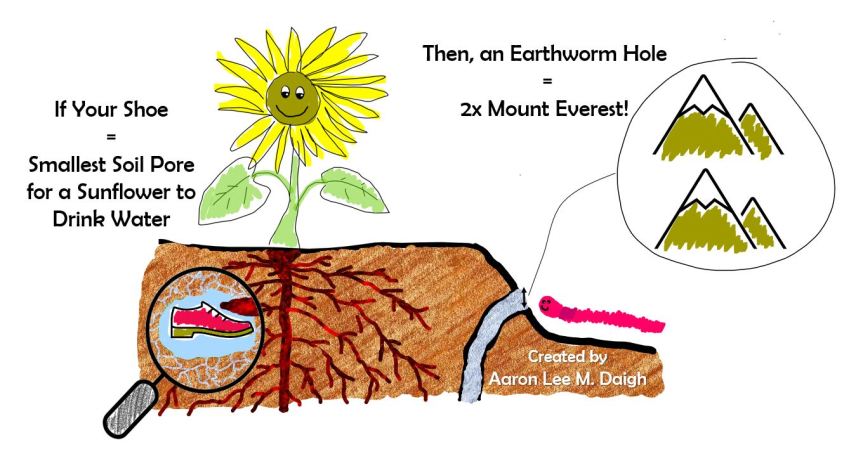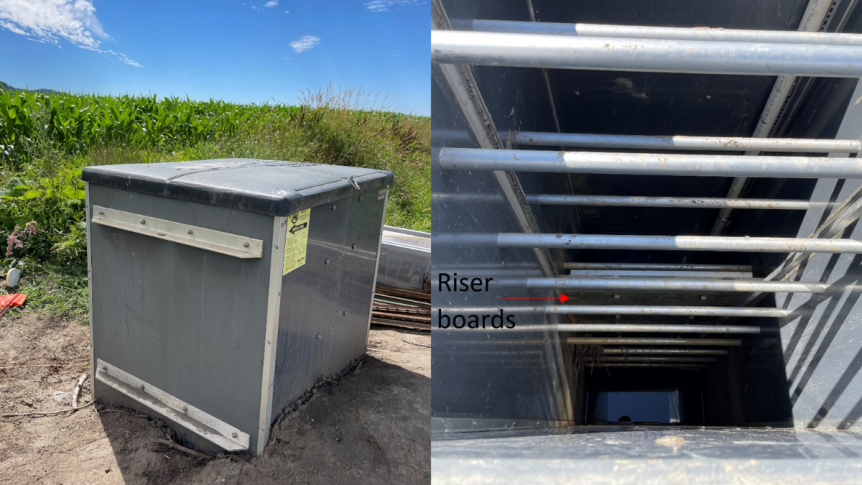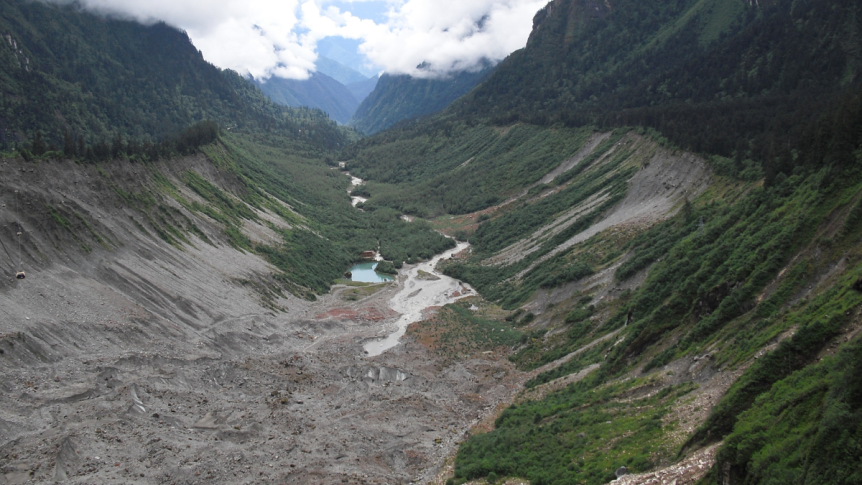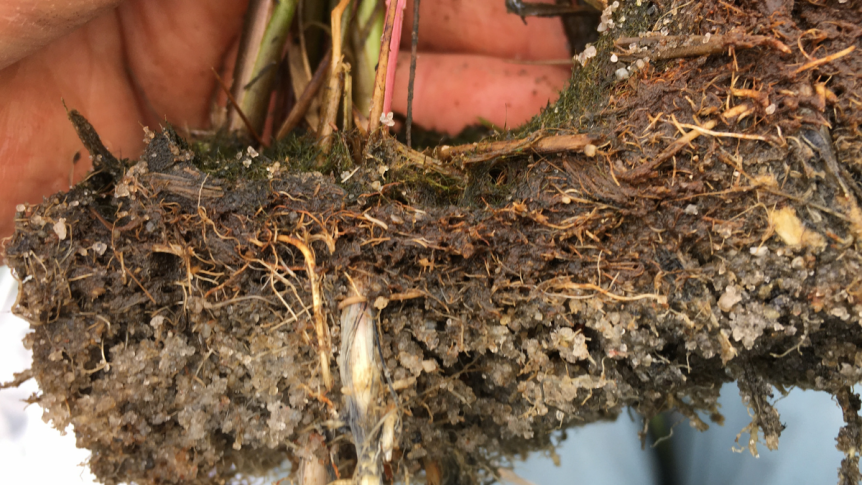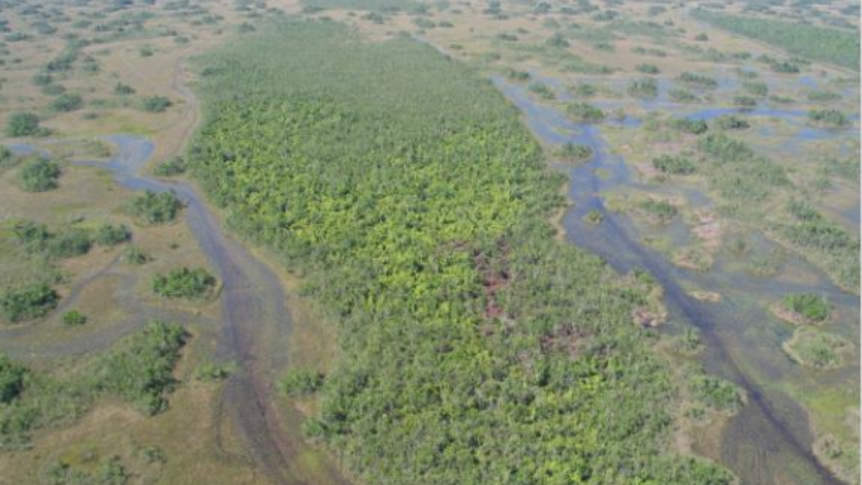Since the beginning of agriculture, people have recognized that a sufficient water supply is essential for crop production. The capacity of soil to store and supply water for plant growth is a fundamental agroecosystem service. It also is a soil health indicator. How well this soil water storage function performs affects water use efficiency, irrigation … Continue reading What affects how well soil holds water?
What are soil pores?
Pores are in almost everything. Look closely enough and you will find them in the wood and bricks of buildings, your skin, and the ground beneath. Soil pores are the spaces between Earth’s solid pieces (rocks, sands, silts, clays, and organic matter). A visualization depicting if the smallest pore a sunflower can drink water from … Continue reading What are soil pores?
How do soil microarthropods affect crop production?
Most people rarely think of the thousands, if not millions, of living things they step on every day. Soil mesofauna are the tiny arthropods that live beneath our feet, ranging in size from 100µm to 2mm, which is comparable to a grain of salt. This intermediate size category of soil arthropods includes microarthropods, a group … Continue reading How do soil microarthropods affect crop production?
What is controlled drainage and subirrigation?
One of the most important jobs for a grower is managing water. Some areas of the United States have plenty of rainfall throughout the growing season. Others do not. And still others have too much water at some times of the year and not enough water at others. All of these different farm fields need … Continue reading What is controlled drainage and subirrigation?
What is the Vadose Zone?
Scientists call the region between the soil surface and the groundwater table the vadose zone. It also is often called the unsaturated zone. This zone comprises soil and underlying sediments or bedrock that lie above the groundwater table. The vadose zone contains “the living skin” of our planet, that is, the outermost layer of Earth … Continue reading What is the Vadose Zone?
Does the soil on a baseball field influence the players?
In a word, yes, the type of soil on the baseball field greatly affects how players perform! Professional baseball fields are built from many types of soil. You might never guess that beneath the athletes’ feet is a precisely-engineered mixture made of multiple components. We call these materials “engineered soils.” Engineered soils are designed and … Continue reading Does the soil on a baseball field influence the players?
How did the forest develop at the Hailuogou glacier area?
Since the mid-19th century, increasing temperatures have resulted in the retreat of mountain glaciers on all continents. When glaciers retreat, they leave “glacial debris.” This debris serves as new substrate for soil and ecosystem development. This is often called “parent material” in the process of soil formation. The glacial debris is initially loose material, which … Continue reading How did the forest develop at the Hailuogou glacier area?
How do tidal marshes store carbon?
Tidal marshes are wetlands that are covered with incoming tidal water twice a day. These marshes may be as small as narrow fringe along a tidal creek or miles across in estuaries with adjacent flat landscapes. There are nearly 40 million acres of tidal marshes along the Atlantic, Gulf, and Pacific shores of the US. … Continue reading How do tidal marshes store carbon?
What is a soil carbon credit?
Agriculture is essential to ensuring global food security. However, the agricultural industry is also one of the largest sources of greenhouse gas emissions. Some agricultural practices can release carbon dioxide, nitrous oxide and methane into the atmosphere. Incentivizing climate-smart farming practices by creating “soil carbon credits” is one way to reduce the impact of agriculture … Continue reading What is a soil carbon credit?
What is a tree island, and how does it help with carbon storage?
We explored how coastal areas are capable of storing carbon at a great capacity in a recent blog. The Everglades in southern Florida are also known as a reserve of carbon storage. Some areas of the Everglades have “tree islands” and a recent study showed they are capable of storing more carbon and other nutrients … Continue reading What is a tree island, and how does it help with carbon storage?

